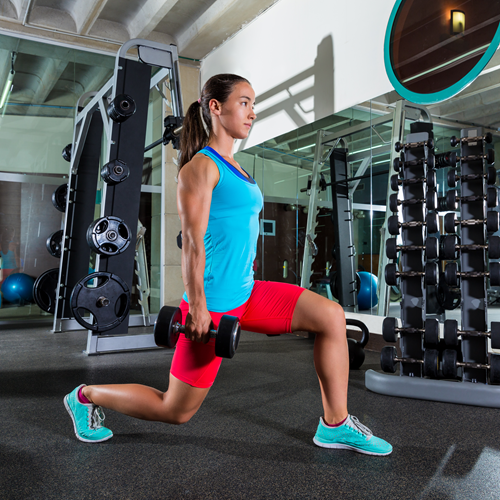Chiropractic makes you stronger AND helps relieve pain and increase range of motion (ROM). A study published in the peer-reviewed medical journal Brain Sciences examined chiropractic’s role as a performance enhancer for athletes.
Table of Contents
ToggleResearch Shows Chiropractic Makes You Stronger
The cutting-edge study, titled “Impact of Spinal Manipulation on Cortical Drive to Upper and Lower Limb Muscles,” specifically tested the power generated by the soleus muscle (calf) in elite taekwondo athletes before and after an adjustment. They found that an adjustment provided them with an increased maximum voluntary contraction for 30 minutes and an elevation of cortical spinal excitability for at least 60 minutes. According to the researchers, adjustments resulted in “improvement of neural adaptations such as the H-reflex and the V-wave which contributes to enhanced motor performance.”
Research Proves Chiropractic Makes You Stronger
The study builds on research from the Brain Sciences Journal, where researchers measured electrical impulses in the arms and legs of patients before, during, and after a chiropractic adjustment. They saw a significant increase in muscle contraction after their chiropractic adjustment.
Of course, a single adjustment from a Denver Chiropractor won’t magically turn you into a world-champion athlete. Still, it’s exciting to see the evidence proving chiropractic provides many more benefits for athletes than just pain relief and improved range of motion.
It’s a big reason chiropractors are more present in the pro sports world than ever. Virtually every professional baseball, football, basketball, and hockey team has a dedicated doctor of chiropractic on their medical team. In fact, Dr. Bill Moreau, DC, DACBSP, CSCS, has worked at the United States Olympic Committee since February 2009, becoming the first Managing Director of Sports Medicine for the United States Olympic Committee (USOC) in February 2012. Elite athletes around the world understand the performance-enhancing benefits of chiropractic care.
Build Strength Using Body Resistance Exercises
A practical and safe way to build muscle strength is using exercises that use the body as resistance. Push-ups are a classic example of this type of workout. They are great for overall upper body strength as they work the chest, shoulders, and triceps muscles. There are also modified versions for those who find standard push-ups too challenging. Squats are excellent for the lower body. They work the thighs, and the calves benefit from their role in supporting the body. Front planks, side planks, and “Bird Dogs” are ideal for strengthening the core. Many others exist, but these three exercises can keep you strong while aging.
Weight Training is Important!
When it comes to increasing muscular strength, weight lifting is the best method. Using heavy weights is a great way to build strength and add muscle mass, but higher repetitions (reps) with lighter weights can reduce the risk of injury. More sets and less rest time between will increase intensity without increasing the weight. If you can handle it, lifting weights is a great exercise. Of course, be sure to follow all safety guidelines, and it is also a good idea to get your doctor’s OK, especially for seniors.

Why Maintaining Your Strength Matters
Stronger is better. Improved stamina, balance, coordination, and performance can help every aspect of life. What could you do with more strength and stamina? Whether you are a competitive athlete or a weekend warrior just trying to keep in shape, studies show that regular chiropractic care is essential to reaching your full potential as an athlete.
The Benefits of Exercising After an Adjustment
Patients often ask, “Can I lift weights after chiropractic adjustment”? The answer is “yes,” sort of. In general, exercise after a chiropractic adjustment is o.k. However, there are some things to keep in mind. The primary goal of our Denver Chiropractor is for our patients to experience the greatest benefits they can from our care and to stay active and healthy. Be sure to ask your chiropractor if your specific injury would do well with some added exercise. However, here are some of the reasons exercising after your adjustment can be a good thing, as well as how chiropractics can make you stronger.
- Enhancing the Benefits From Your Adjustment: Exercising after your chiropractic adjustment can help improve your body’s response to your adjustment. One of the negative effects of the subluxation is increased muscle tone or “guarding”. When a muscle repeats a task repeatedly, it can become a habit. This is great when we are learning to walk, swim, or swing a golf club. It can be bad if it is creating “aberrant” motion by guarding an injury. By giving the muscles new “good” instructions, we can break the old “bad” instructions. Also, strengthening muscles and improving flexibility help support the spine and can help prevent injuries that bring people to a chiropractor in the first place. A 2005 study published in the Clinical Journal of Pain found that patients who exercised after an adjustment experienced greater pain relief than those who didn’t.
- Promoting Improved Health and Overall Sense of “Well-being”: Countless studies prove exercise’s physical and mental benefits. Exercise enhances cardiovascular health, increases strength, improves flexibility, and even reduces anxiety and depression. So, staying active after your adjustment helps maximize the benefits of your visit and also helps your overall health.
- Improving Post-Adjustment Recovery: Occasionally, patients can experience some soreness or discomfort after their chiropractic adjustment. This is not entirely uncommon and often occurs more often in the beginning stages of Chiropractic care. If you do experience post-adjustment soreness, light exercise can help reduce that soreness by increasing blood flow. Improved blood flow to areas injured brings in nutrients and oxygen to the injured area and flushes toxic buildup due to inflammation. Light stretching and low-impact exercise also reduce stiffness and improve joint flexibility.
Importance of Exercising Properly
- Listen to Your Chiropractor’s Advice: The person treating your injury best determines if you are ready to exercise after your adjustment. You must consider the details of your specific injury or condition, the severity of your symptoms, and your overall health. It’s important to follow their advice. If you have questions or concerns, don’t hesitate to ask questions. Most chiropractors are happy to explain the reasons behind their advice and are willing to help modify your plan to make it easier for you to follow.
- Start Slow: It’s super important to ease back into exercise after a chiropractic adjustment. It’s best to start with low-impact exercises like walking and swimming. Follow that with bodyweight exercises to gradually improve range of motion (ROM) and strength. Avoid high-impact or strenuous exercises. Most importantly, try to avoid any twisting or bending of the spine, especially a combination of those two. Flexion and rotation create “torsion,” which causes a great deal of strain on the discs and joints in the spine.
- Listen to Your Body: As you begin to return to your regular exercise routine, it’s vital to listen to your body. If you are experiencing pain or discomfort during or after your workout, you may be pushing too hard or performing an activity that isn’t quite right for your specific injury. If this happens, ask your chiropractor for advice and consider changing your exercise routine.
Ready to get stronger? Ready to start feeling better? Book an appointment online or call (303) 424-7171. Want to hear from some of our happy, pain-free patients? Check out some of our 5-Star Google reviews. Our office is conveniently located for patients in Arvada, Denver, and Wheat Ridge, Colorado!

Ready for an expert opinion? Get in touch today!
With a legacy of more than 25 years, our team specializes in helping individuals triumph over back pain, neck discomfort, and persistent headaches, all without relying on addictive medications or risky surgical procedures.






